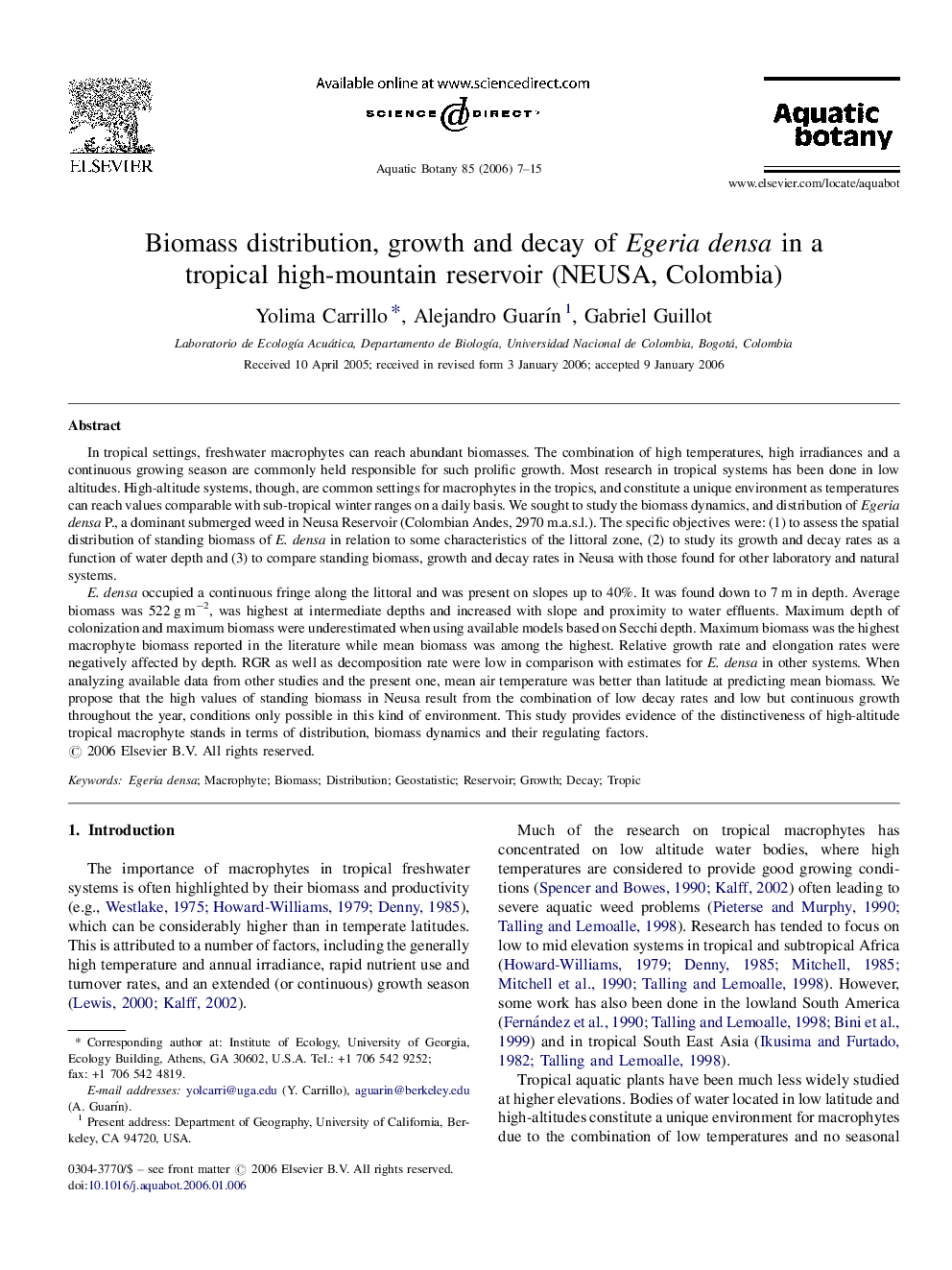| کد مقاله | کد نشریه | سال انتشار | مقاله انگلیسی | نسخه تمام متن |
|---|---|---|---|---|
| 4528753 | 1324326 | 2006 | 9 صفحه PDF | دانلود رایگان |

In tropical settings, freshwater macrophytes can reach abundant biomasses. The combination of high temperatures, high irradiances and a continuous growing season are commonly held responsible for such prolific growth. Most research in tropical systems has been done in low altitudes. High-altitude systems, though, are common settings for macrophytes in the tropics, and constitute a unique environment as temperatures can reach values comparable with sub-tropical winter ranges on a daily basis. We sought to study the biomass dynamics, and distribution of Egeria densa P., a dominant submerged weed in Neusa Reservoir (Colombian Andes, 2970 m.a.s.l.). The specific objectives were: (1) to assess the spatial distribution of standing biomass of E. densa in relation to some characteristics of the littoral zone, (2) to study its growth and decay rates as a function of water depth and (3) to compare standing biomass, growth and decay rates in Neusa with those found for other laboratory and natural systems.E. densa occupied a continuous fringe along the littoral and was present on slopes up to 40%. It was found down to 7 m in depth. Average biomass was 522 g m−2, was highest at intermediate depths and increased with slope and proximity to water effluents. Maximum depth of colonization and maximum biomass were underestimated when using available models based on Secchi depth. Maximum biomass was the highest macrophyte biomass reported in the literature while mean biomass was among the highest. Relative growth rate and elongation rates were negatively affected by depth. RGR as well as decomposition rate were low in comparison with estimates for E. densa in other systems. When analyzing available data from other studies and the present one, mean air temperature was better than latitude at predicting mean biomass. We propose that the high values of standing biomass in Neusa result from the combination of low decay rates and low but continuous growth throughout the year, conditions only possible in this kind of environment. This study provides evidence of the distinctiveness of high-altitude tropical macrophyte stands in terms of distribution, biomass dynamics and their regulating factors.
Journal: Aquatic Botany - Volume 85, Issue 1, July 2006, Pages 7–15